Mammillaria Elongata: Grow & Care for Ladyfinger Cactus
Written by Iris
Nov 16 2021
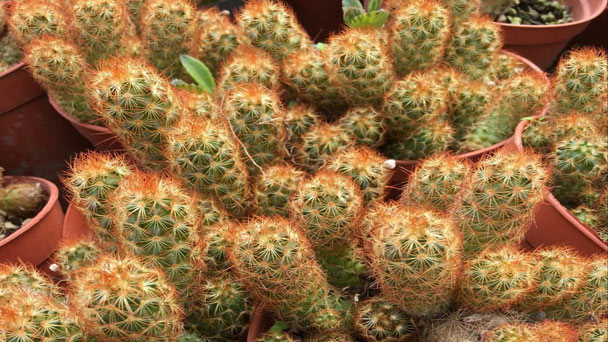
Mammillaria elongata 'Cristata', also known as the Golden Star Cactus, is a rare species of Mammillaria Elongata that has a crest shape. This unique cactus has an interesting history and some special care requirements. Learn more about Mammillaria Elongata (Ladyfinger Cactus) in this article.
Mammillaria Elongata is a plant that requires up to 6 hours of sun when planted inside keep it on a window ledge. That means a south-facing window for most of us.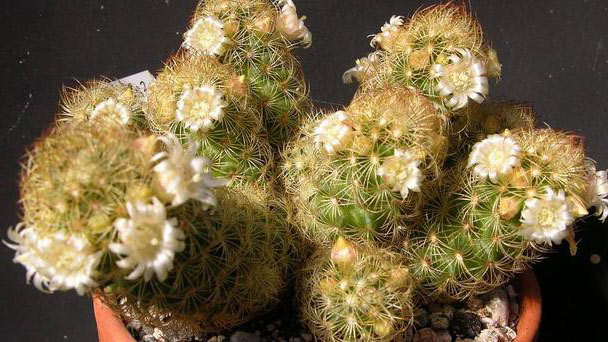
However, if you're looking for a project, you can either collect seeds from your existing Mammillaria Elongata or purchase them on the internet.
Some gardeners recommend soaking the seeds prior to planting, but it's a personal choice. Once you're ready to sow the seeds, be sure to do so in moist, well-draining cactus soil. Keep the soil moist until you begin to see tiny cactus sprouts.
After the seedlings have appeared, you can allow the soil to dry out a bit more to prevent rot. It's not recommended to repot the seedlings until they're big enough to handle safely without accidentally damaging the cacti or their root systems.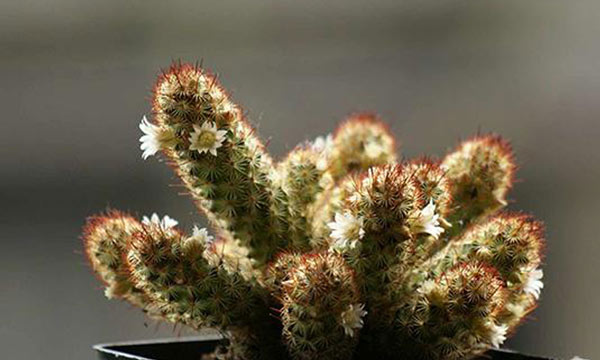
To remove a clump for propagation, you will need nitrile-dipped gloves, silicone tongs, and a sharp knife.
Using the tongs, gently pull one of the cylindrical stems away from the main cluster. If you are not able to break it off without pulling up the rest of the Mammillaria elongata plant, use the knife to cut through the stem.
Allow the end of the stem to callous over for several days before placing in well-draining soil.
Most offsets can be separated by gently tugging them away from the mother plant. Just be sure to protect your hands from the spines. You can also cut them away using a sharp, clean knife, but be sure to cut the offset away as close to the mother plant as possible.
Once separated, it's recommended to allow the offsets to dry out for a few days to allow any wounds to callous. This will help prevent infection and give your offsets the best chance of survival.
After they've calloused, your Mammillaria Elongata can be planted in their new container. They can then be treated just as you did the mother plant.
If your interior space doesn't provide enough sunlight for your Lady Finger Cactus, you may need to consider adding growth lights. Plant lights are usually easy to manage, providing enough light for your succulents and cactuses to grow and flourish even in the direst apartment or office space.
When planting Mammillaria Elongata outdoors, it is best to provide your Lady Fingers with plenty of sunlight, if possible. However, be sure to increase the light level slowly to avoid sunburn the cactus. These cactuses love the sun, but too much too soon can permanently damage your precious plants.
Instead of immediately leaving the cactus outside all day, slowly increase the amount of time in direct sunlight over a few weeks. That way, your Lady Fingers has time to adapt without compromising its health and appearance.
Avoid soils that contain large amounts of water-retaining substances, such as clays, peat moss, or coconut shells. Small amounts of these components are unlikely to have a huge impact on drainage, but you should choose soils that are composed primarily of larger particles that promote drainage.
When buying commercial soil, consider a label specifically for cactus and succulents. These soils often contain more sand, gravel, perlite or bark to aid drainage and ventilation.
Of course, if you're the DIY type, you can consider mixing your own cactus soil. Third, try to avoid ingredients that promote water retention.
Mammillaria elongata may be a slow-growing cactus, so don't expect to have to report your Lady Fingers often. However, if your cactus is in the same soil for a long time, consider adding water-soluble plant foods during the growing season.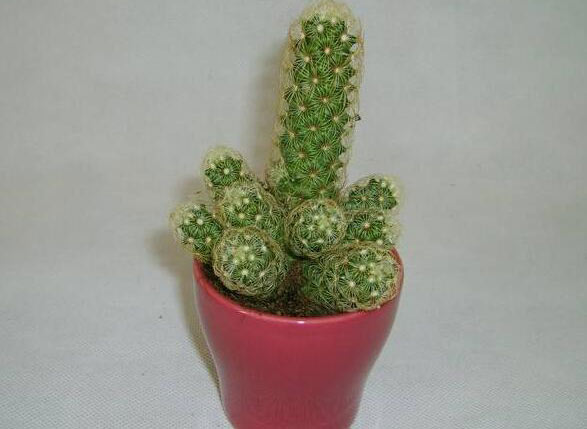
Though cooler temperatures can be tolerated during periods of dormancy, Lady Finger Cacti will not survive freezing temperatures. If you grow your Lady Fingers indoors, temperatures are likely to be more consistent, but try to protect your cacti from sudden temperature changes or drafts if possible.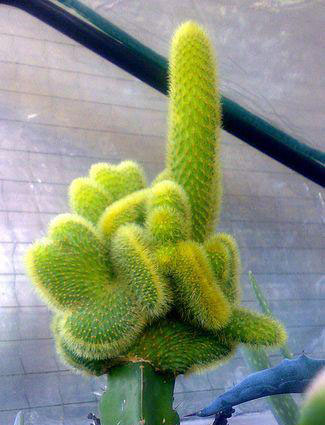
However, when it does bloom, it produces beautiful flesh-colored flowers that are flushed with pink.
When Copper King blooms in the spring, it produces petite yellow or pink flowers that may or may not be flushed with pink.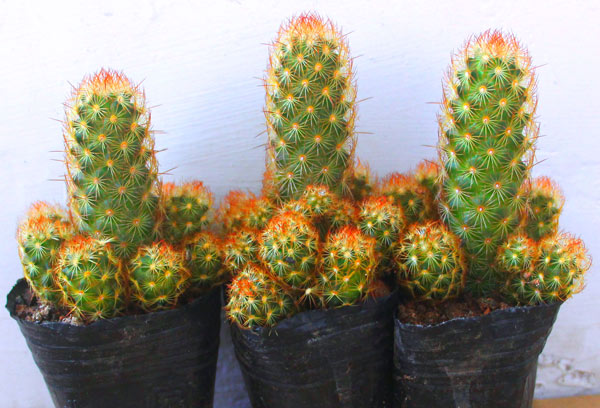
Where to Grow Mammillaria ElongataHow to Grow Mammillaria ElongataMammillaria Elongata Propagation with SeedsMammillaria Elongata Propagation with Stem CuttingsMammillaria elongata Propagation with OffsetsHow to Care for Mammillaria ElongataLight CareMammillaria Elongata Soil CareMammillaria Elongata Water CareMammillaria Elongata Temperature and Humidity CareMammillaria Elongata Fertilizer CareMammillaria Elongata Pruning CareMammillaria Elongata Pests and Diseases CareVarieties of Mammillaria ElongataMammillaria elongata FAQHow do I get my Mammillaria elongata to bloom?How do you repot Mammillaria Elongata?
Where to Grow Mammillaria Elongata
Mammillaria Elongata Cactus is a plant that grows easiest in free-draining gritty compost. The mammillaria elongata plant does not handle cold well, so if you live an area that is colder than -6,7°C ( 20°F) use a succulent container. It makes it easier to transport the Mammillaria elongata plant indoor and outdoor.Mammillaria Elongata is a plant that requires up to 6 hours of sun when planted inside keep it on a window ledge. That means a south-facing window for most of us.

How to Grow Mammillaria Elongata
Mammillaria Elongata Propagation with Seeds
Propagation Mammillaria Elongata from seeds is possible, but it's an extremely slow process, which is why it's not done as frequently as the other two propagation methods.However, if you're looking for a project, you can either collect seeds from your existing Mammillaria Elongata or purchase them on the internet.
Some gardeners recommend soaking the seeds prior to planting, but it's a personal choice. Once you're ready to sow the seeds, be sure to do so in moist, well-draining cactus soil. Keep the soil moist until you begin to see tiny cactus sprouts.
After the seedlings have appeared, you can allow the soil to dry out a bit more to prevent rot. It's not recommended to repot the seedlings until they're big enough to handle safely without accidentally damaging the cacti or their root systems.

Mammillaria Elongata Propagation with Stem Cuttings
Mammillaria Elongata can be propagated from cuttings. Use care when taking a cutting. Follow the directions in this post to learn how to handle a cactus safely.To remove a clump for propagation, you will need nitrile-dipped gloves, silicone tongs, and a sharp knife.
Using the tongs, gently pull one of the cylindrical stems away from the main cluster. If you are not able to break it off without pulling up the rest of the Mammillaria elongata plant, use the knife to cut through the stem.
Allow the end of the stem to callous over for several days before placing in well-draining soil.

Mammillaria elongata Propagation with Offsets
The most common method of lady finger cactus propagation is by separating offsets. As a clumping species of cactus, a single stem will quickly be surrounded by smaller offsets. These can then be separated and grown in different containers.Most offsets can be separated by gently tugging them away from the mother plant. Just be sure to protect your hands from the spines. You can also cut them away using a sharp, clean knife, but be sure to cut the offset away as close to the mother plant as possible.
Once separated, it's recommended to allow the offsets to dry out for a few days to allow any wounds to callous. This will help prevent infection and give your offsets the best chance of survival.
After they've calloused, your Mammillaria Elongata can be planted in their new container. They can then be treated just as you did the mother plant.

How to Care for Mammillaria Elongata
Light Care
Like most lactobacillus, Lady Fingers grows best in bright light if kept indoors. A south-facing window is ideal, but east or west facing window should also suffice. This is not a plant that does well in low light.If your interior space doesn't provide enough sunlight for your Lady Finger Cactus, you may need to consider adding growth lights. Plant lights are usually easy to manage, providing enough light for your succulents and cactuses to grow and flourish even in the direst apartment or office space.
When planting Mammillaria Elongata outdoors, it is best to provide your Lady Fingers with plenty of sunlight, if possible. However, be sure to increase the light level slowly to avoid sunburn the cactus. These cactuses love the sun, but too much too soon can permanently damage your precious plants.
Instead of immediately leaving the cactus outside all day, slowly increase the amount of time in direct sunlight over a few weeks. That way, your Lady Fingers has time to adapt without compromising its health and appearance.
Mammillaria Elongata Soil Care
Mammillaria Elongata is like most cactus species in that they require soil that allows a lot of drainage. Keep in mind that too much water can eventually lead to root rot, so you need to make sure you plant the cactus in the soil to get the unwanted water out.Avoid soils that contain large amounts of water-retaining substances, such as clays, peat moss, or coconut shells. Small amounts of these components are unlikely to have a huge impact on drainage, but you should choose soils that are composed primarily of larger particles that promote drainage.
When buying commercial soil, consider a label specifically for cactus and succulents. These soils often contain more sand, gravel, perlite or bark to aid drainage and ventilation.
Of course, if you're the DIY type, you can consider mixing your own cactus soil. Third, try to avoid ingredients that promote water retention.
Mammillaria elongata may be a slow-growing cactus, so don't expect to have to report your Lady Fingers often. However, if your cactus is in the same soil for a long time, consider adding water-soluble plant foods during the growing season.
Mammillaria Elongata Water Care
When watering the mammillaria elongata (or Ladyfinger Cactus) be careful it is a plant that is sensitive to over-watering. It is a plant that needs to be thoroughly drenched in water and dried before watering again. The Mammillaria elongata plant should be water mostly between Spring to Fall, let the plant dry thoroughly before watering again.
Mammillaria Elongata Temperature and Humidity Care
Mammillaria elongata is not a frost-tolerant plant, so if you're keeping it outdoors and expect temperatures to dip below 30 degrees Fahrenheit, it’s best to bring your cactus inside. If planted in the ground outdoors, be sure to cover your cacti to prevent freezing.Though cooler temperatures can be tolerated during periods of dormancy, Lady Finger Cacti will not survive freezing temperatures. If you grow your Lady Fingers indoors, temperatures are likely to be more consistent, but try to protect your cacti from sudden temperature changes or drafts if possible.
Mammillaria Elongata Fertilizer Care
Mammillaria elongata thank a subscriber with a cactus fertilizer in spring and another in summer. Just follow the fertilizer instructions you buy.Mammillaria Elongata Pruning Care
Mammillaria elongata does not need to be pruned.Mammillaria Elongata Pests and Diseases Care
Mammillaria elongata is not frequently attacked by pests being only its main enemy the excess moisture in the substrate.
Varieties of Mammillaria Elongata
Though rare, there are a few cultivars of the Lady finger cactus that can be found by the determined cactus lover. Though Mammillaria elongata are not as common as the original variety, they are highly sought after by collectors.- Mammillaria elongate 'Monstrous Lady Fingers'
However, when it does bloom, it produces beautiful flesh-colored flowers that are flushed with pink.
- Mammillaria elongate 'Copper King'
When Copper King blooms in the spring, it produces petite yellow or pink flowers that may or may not be flushed with pink.

Mammillaria elongata FAQ
How do I get my Mammillaria elongata to bloom?
To get flowers, it is necessary to watch watering and fertilizing schedules during the growing season to assure flowers for the next year. This Mammillaria elongata plant has pale yellow to white blooms. Water and fertilize your cactus regularly throughout the summer, like any other container plant, as this is its growing season.How do you repot Mammillaria Elongata?
Repot as needed, preferably during the warm season. To repot Mammillaria Elongata, make sure the soil is dry before repotting, then gently remove the pot. Knock away the old soil from the roots, making sure to remove any rotted or dead roots in the process. Treat any cuts with a fungicide.Latest Updated
- Benefits of Bugleweed - 7 Science-backed Health Benefits
- Bugleweed Dangers & Side Effects - Is It Poisonous?
- How to Plant Evergreen Trees - What You Should Know
- When to Plant Evergreens - Grow Guide for Evergreen Trees
- 12 Wonderful Evergreen Shrubs for Your Garden
- 12 Popular Evergreen Plants with Pictures for Beginners
- When And How To Prune A Lilac Bush Like a Pro
- How to Grow & Care for Lilac Vine (Hardenbergia Violacea)
- Japanese Lilac Tree (Syringa Reticulata) Care & Propagation Guide
- Shumard Oak Pros and Cons - What to Know
Popular Articles
- Winter maintenance of Antirrhinum Majus
- How to Grow Terminalia Mantaly Tree
- How to Grow and Care for Crossostephium Chinense
- How to grow Antirrhinum Majus in spring
- Peristeria Elata (Dove Orchid) Profile: Info & Care Guide
- Underwatered Snake Plant (Sansevieria Trifasciata) - Signs And How To Fix
- How to Care for Brazilian Jasmine Plant (Mandevilla Sanderi)
- How to Grow & Care for Graptopetalum Purple Delight in Summer
- Rosa Chinensis (China Rose): Plant Growing & Care Tips
- How to Care for Baby Sun Rose (Aptenia Cordifolia)